Introduction
High demand and over-exploitation of petroleum products have resulted to a decline of oil reservoirs in the last few decades. Nonetheless, various stakeholders are seeking alternative means in order to supplement such fading resources in order to ensure that sustainability is achieved. This case study seeks to establish alternative options in which oil demand can be met, while at the same time safeguarding resources for the future generations. However, it is almost impossible to meet the demand which would have been met by the natural oil production methods. These oil trends are deemed to deteriorate over the years of exploitation. As such, enhanced oil recovery oil methods help to regenerate such resources so as to meet the energy demand across the globe.
There are three major renowned EOR methods applied expansively across the globe. They include thermal, gas, and chemical methods. However, there are several factors which must be put into consideration so as to ensure oil recovery in mature fields at minimal cost. Chemical and thermal oil recovery methods in sandstone formations are often used in mature oil fields across the globe. The world must meet its energy demand and ensure sustainability is achieved. This will ensure that the resources are safeguarded for future generations while at the same time meeting the world’s oil demand (Alali, Pishvaie, and Jabbari 261).
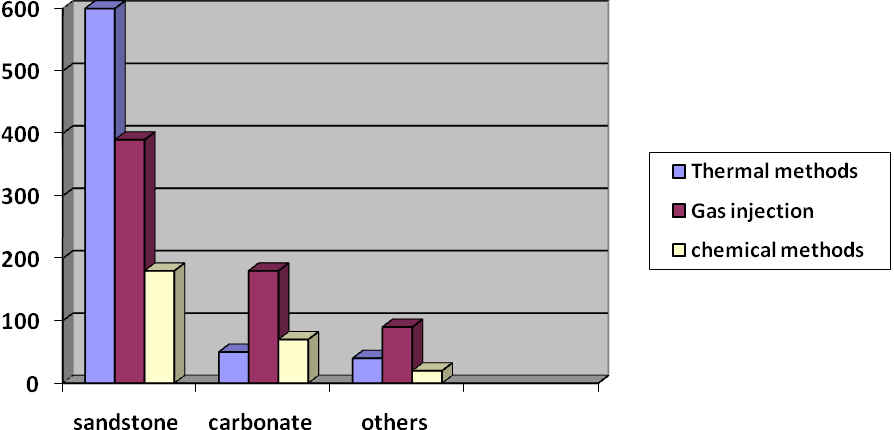
Thermal Methods
In this case, steam-flooding, cyclic steam injection, as well as SAGD oil recovery techniques, have been widely used in oil exploitation of heavy and extra heavy oil production in sandstone mature oil reservoirs. SAGD pilot projects have been established on various oil mature fields so as to expand its reliability. However, it is fundamental to note that this oil recovery technique best suited in sandstone formations. High pressure air injection is not an option especially when using thermal methods. In-situ projects are equally important in the oil production through thermal methods, especially in heavy oil fields.
Gas Methods
This technique is widely used for fragile, condensate and unstable oil reservoirs. However, nitrogen injection may be induced under miscible conditions which tend to create a beneficial environment for vaporization when exposed to light. Previous studies indicate that the gas EOR is mainly based on gravity. This is an added advantage as it minimizes the overall cost of operation which would otherwise have been used to extract the oil from the reservoirs. Carbon flooding is also another fundamental technique applied in gas-based oil recovery methods, especially in light sandstone oil reservoirs. The advantage of using gas-based oil recovery methods is that carbon can be drawn from both natural environment and industrial sources. However, this oil technique is not without challenges. This technique has attracted a heated debate due to the conflict of sustainability and global warming. Carbon dioxide is a major contributor of global warming. Its provision and usage in high concentration tends to increase global warming which further affects the global climate (Lee and Tripathi 7137).
Chemical Methods
In Karamay oil fields, EOR by the use of chemical methods best suits the area. This is because many oil fields are in high-water cut production era. This minimizes the cost of production while at the same time maintaining high oil production. Different EOR screening methods were experimented so as to establish the most appropriate recovery method. The efficiency of the method used, total cost and the total percentage of oil recovered were some of the factors during screening process. In Karamay region, surface mining was found not suitable since there was too much surface digging and hence costly and time-consuming. In this case, the required amount of digging of about 8000ft depth. Likewise, EOR by the use of steam does not work since the reservoirs present in Karamay region exceed the maximum depth of 4500ft, which is convenient for this method.
Combustion on the other hand was found not suitable due to its pollution characteristics. This method tends release a lot of CO2 into the air which causes global warming, hence affecting the climate across the globe. When it comes to the efficiency of EOR, immiscible gas method does not fit either. This is because of its low-end recovery product. Immiscible has low salvage when judged against the miscible gas which is not in the API range. This makes it uneconomical due to the fact that the amount pumped into the process does not reflect on the total profit. As such, the only EOR method which was found to fit for Karamay region was chemical flooding. Figure 1 summarizes the screening process which was conducted in the Karamay region.
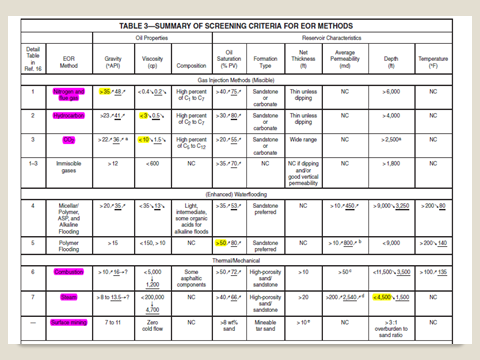
Karamay oil wells are situated in the Northern part of Xinjiang region in China. The name was derived from a native language in China, which means “black oil” which is a direct translation of oil deposits near the city. The largest oil deposits in China were discovered in 1955 in Karamay region. This region is full of basaltic rocks. This explains the reason as to why porous and nonporous rock encloses oil deposits making it possible for the oil reservation. It is believed that these rocks were derived from mantle plume-linked magmatism related to with the evolution of the Paleoasian oceanic system
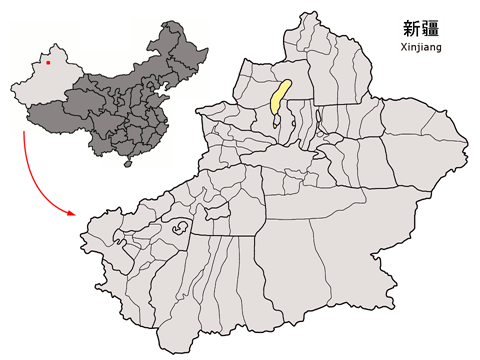
The gravity of the region was found to be than 25° API while the viscosity of the slug should be less than 30 cp. The depth of the reservoir should be approximately 8000 ft while net thickness should be 10 ft. The composition of light should be monitored so as to achieve intermediate degree. Oil saturation should be 30% PV so as to attain desirable results. However, these parameters keep on varying depending on the type of treatment used under chemical recovery methods.
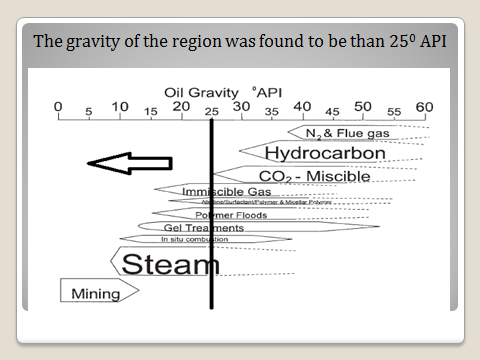
Over the years of exploitation, most Karamay oil deposits are depreciating due to over-exploitation. Therefore, it is important to employ new technologies in this specific location so as to ensure maximum production of oil at a minimum cost (Brown 316). The first classification includes unprocessed oil from large oil fields with a capacity of more than 100,000 barrels per day throughout the year. Large oil fields that do not attain the threshold of more than 100,000 barrels will be grouped in the second category. Such fields will be termed as dwarf oil fields. Other categories include condensate and natural oil gas. In Karamay oil fields accounts 90% of total oil production in China’s. All active oil fields have peaked and now they are deteriorating. However, it is fundamental to ensure that enhanced oil recovery techniques are applied so as to counter the declining of oil products (Alagic et al. 220).
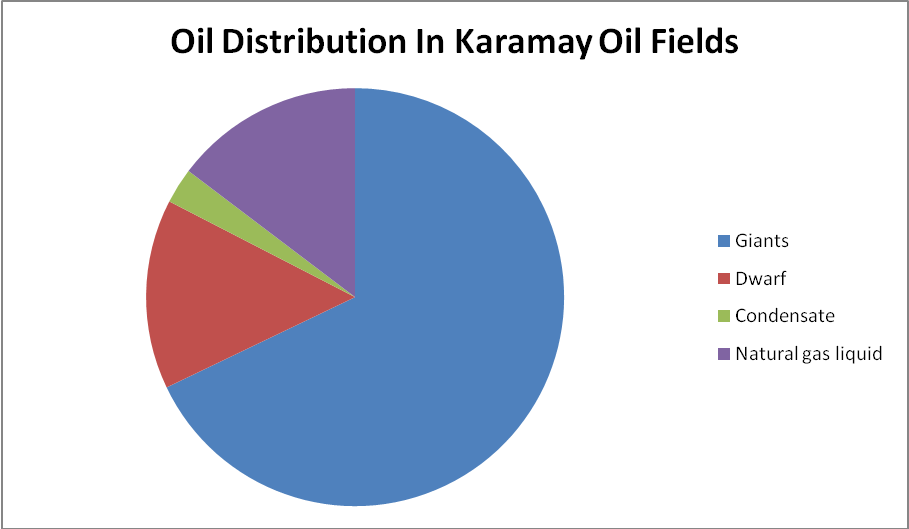
The use of sodium bicarbonate and sodium carbonate has proven to be fruitful in the past decades. Polymer flooding requires to be measured as a developed proficiency, which ought to be applied in this field. A number of enhanced oil recovery substance techniques, apart from polymer flood, have been expansively acknowledged in various texts in the last two decades. On the other hand, at the existing instance, Daqing oil sinks represent one of the leading, if not the biggest, alkali surfactant polymer floods applied at the present. Chemical torrents has been deliberate and put into place in Karamay for the last and a half decade through a number of pilots of different scales (Babadagli 221).
Surfactant manufactured by a certain company (XAP) was supplied so as to establish the suitability for the recovery of Karamay oil. Obtained results were negative since the surfactant generated discouraging levels of crude oil. During this experiment, two evident problems of using high concentration of CJ2 were encountered. First encountered problem was the relation of the surfactant-polymer in the compound slug. The other difficulty associated with the use of chemical methods in Karamay fields was the fact that the solution had to be stirred constantly throughout the process hence making it expensive. This was as a result of constant separation and precipitation of substances used in the regeneration of oil. This was also manifested when low surfactant concentration was used. The amount of precipitation was directly proportional to the concentration of surfactant polymer.
There was the presence of surfactant and several polymers in the analysis of the precipitated materials. Therefore, surfactant polymer relation could lead to unknown amount of chemicals, which could alter the blend properties like the ability to flow as well as injection difficulties, particularly into the permeability rock. Despite the fact that thermal techniques still overshadow other EOR methods for heavy oil reservoirs, chemical methods are also viable and cheap in the reproduction of oil (Wever, Picchioni, and Broekhuis 1558).
A 13-sink channel was used for the chemical flooding. In these oil sinks, the crest of 33-ft- chunky disburse fragment is at 950 ft. Disburse area has five geographical stratums. Inner cores were taken for each oil sink, and central stoppers were utilized for permeability and porosity magnitude. Stochastic permeability regions were produced for each stratum by the use of intermediate decomposition techniques, which were subjected with the nucleus permeability figures. The pay regions are cut off from each other by non-communicating shale stratums. A pragmatic affiliation was used to compute perpendicular permeability such as a function of parallel permeability. “Crude-oil and water ability to flow was found to be at 71.6°F reservoir temperatures are 17.2 and 0.9 cp, respectively” (Qazi et al. 598).
Surfactant or polymer flooding involves infusion of a slug that encloses stream, surfactant, salt, alcohol as well as hydrocarbons. The size of the slug frequently ranges from 5% to 15% PV for excessive surfactant intensity technique and 15-50% PV for low intensities. This is then followed by polymer-coagulated water. Intensity of the polymer regularly ranges from 500 to 2000 mg/l, while the degree of polymer emulsion introduced maybe 50% more or less depending on the method design. The mechanism involved in this recovery process engrosses the reduction of the interface tension between oil and water, emulsification of oil and water, the blending of oil, and finally the mobility enhancement.
As it is the case in Karamay oil fields, sandstone offers an optimum environment for such EOR mechanisms because of carbonate reservoirs which are usually heterogeneous and hence contain solutions with high ion content. This increases the degree of adsorption which is commonly used in surfactants. Permeability should also be higher than 20 md so as to ensure sufficient insertion. The reservoir temperature should also be regulated to 175°F in order to reduce degradation of the surfactants.
ASP EOR was not found suitable for the region due to the fact that the region experiences arid climatic conditions and hence no adequate water to feed the flooding project. AP flooding method was preferred due to its convenience and efficiency as compared to the rest. The total amount of capital invested was found to be relatively low while its oil recovery efficiency was found to be higher.
Works Cited
Alagic, Edin, Kristine Spildo, Arne Skauge and Jonas Solbakken. “Effect of crude oil aging on low salinity and low salinity surfactant flooding.” Journal of Petroleum Science and Engineering 78.2 (2011): 220 – 227. Print.
Alali, Najeh, Reza Pishvaie, and Hadi Jabbari. “A new semi-analytical modeling of steam-assisted gravity drainage in heavy oil reservoirs.” Journal of Petroleum Science and Engineering 69.3 (2009): 261 – 270. Print.
Babadagli, Tayfun. “Development of mature oil fields — A review.” Journal of Petroleum Science and Engineering 57.3 (2007): 221 – 246. Print.
Brown, Lewis. “Microbial enhanced oil recovery (MEOR).” Current opinion in microbiology 13.3 (2010):316 – 320. Print.
Lee, Jinkee, and Anubhav Tripathi. “Intrinsic viscosity of polymers and biopolymers measured by microchip.” Analytical Chemistry 77.22 (2005): 7137–7147. Print.
Qazi, Muneer, Mishal Subhan, Nighat Fatima, Muhammad Ali and Safia Ahmed. “Role of Biosurfactant Produced By Fusarium sp. BS-8 in Enhanced Oil Recovery (EOR) Through Sand Pack Column.” International Journal of Bioscience, Biochemistry and Bioinformatics 3.6 (2013): 598. Print.
Wever, Diego, Francesco Picchioni and Albert Broekhuis. “Polymers for enhanced oil recovery: a paradigm for structure-property relationship in aqueous solution.” Progress in Polymer Science 36.11(2011):1558–1628. Print.